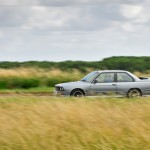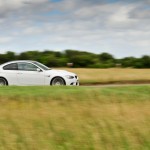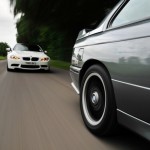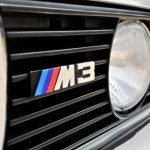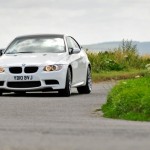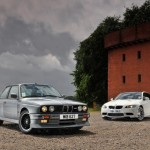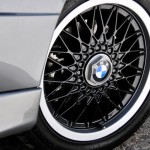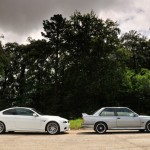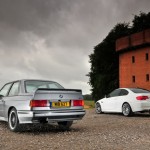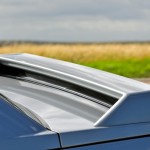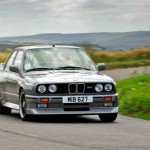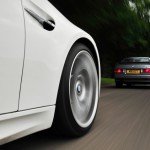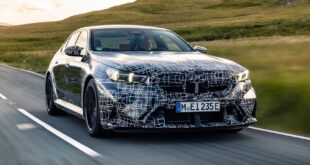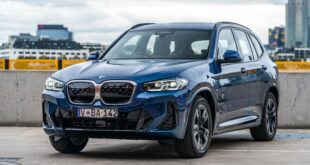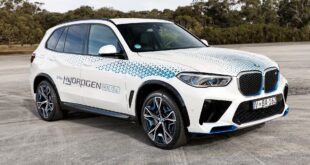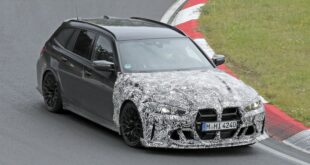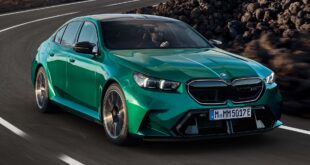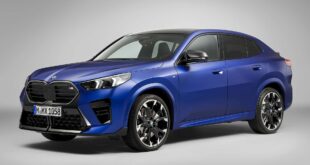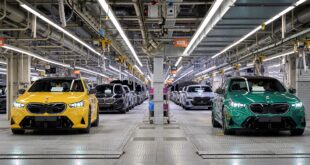 Inside Line published an article today comparing the 1986 BMW M3 E30 and the 2010 BMW M3 E92. This is a look 25 years back into how the sports car with a backseat and the most significant M car of all time has changed in the course of history. Here are some excerpts of the article:
Inside Line published an article today comparing the 1986 BMW M3 E30 and the 2010 BMW M3 E92. This is a look 25 years back into how the sports car with a backseat and the most significant M car of all time has changed in the course of history. Here are some excerpts of the article:
The Drive
Turn an actual metal ignition key to start the E30 M3 and consider how even this feels curiously retro. First gear in the five-speed Getrag manual gearbox is down and to the left below Reverse, leaving gears 2-5 to form an H-pattern, a racing-style shift pattern that takes some readjustment. Time and again we find ourselves starting in reverse, which is not an ideal thing to do when you’re driving a rare classic that belongs to BMW’s U.K. distributor. The shift lever is trimmed with microfiber suede and the shift throws are longer than you’d expect, but the action is also lighter than you’d expect, just like the clutch.This is a big moment. For us, the opportunity to drive this car is like meeting a hero, and that’s always fraught with danger. We remember once meeting George Lucas at a party and he was so staggeringly rude and obnoxious that we sold our box set of Star Wars figures. Since we grew up watching Fearless Frank Sytner racing the M3, we don’t want to be similarly disappointed.
The cliché “road racer” could have been coined by this car, but perhaps in its old age it has gained some civility. The ride is surprisingly supple, helped no doubt by 45-series 16-inch tires. It turns in abruptly but there’s still a beat between input and output. This is not a Porsche 911 RS in retro clothes. It feels like a well-sorted road car, not some track day special.
Nor, if we’re honest, does the E30 M3 feel very fast. The history books tell us that this Evo 2 car developed 215 hp, weighed 2,646 pounds, hit 60 mph from a standstill in 6.7 seconds and reached a top speed of 143 mph. These figures might have been exotic in 1989, but they’re no more than mildly sporting today. The engine note is no substitute for the missing stereo, either. Compared with BMW’s inline-6 engines of the same era, the M3’s inline-4 sounds strained and even (whisper it) coarse.
But let’s not rip up those posters from our childhood too quickly. What the E30 can still teach us is the benefit of a well-sorted chassis and elegant engineering. There is poise and fluency to this car that the years have not diminished. The chassis responses are so beautifully judged that a rhythm comes naturally to your driving. So many modern sports cars demand a point-and-squirt technique, because their performance is so colossal relative to the confines of the road. The E30 is not like that. It encourages you to think about driving again and then it responds with an enviable repertoire of skills.
M3 v4.0
Before you drive the modern M3, you have to decide how much power you want, how much of an electronic safety net you want in the event of traction and stability unexpectedly disappearing and whether you want the damping moderate, firm or brutal. Then you push a button and the 4.0-liter V8 comes to life.You’ll probably have read before that in comparison to the original single-malt M3, the E92 is a white wine spritzer on ice. But that’s complete nonsense. In reality, it’s the modern car that’s the more urgent and even brutal companion. The engine is derived from the M5’s V10, itself a product of BMW’s F1 experience, and the V8 revs all the way to 8,500 rpm. The ride on the 35-series 19-inch tires is never less than firm, picking up imperfections that the E30 swats away. The steering is more direct and the car turns into a corner more acutely. To succeed you must bully this car, while you caress and cajole the E30.
But it’s massively faster. Our acceleration to 60 mph from a standstill takes 4.6 seconds, which is performance that tells its own story. Acceleration in the midrange of this engine’s power band, when traction is no longer such a challenge, is even more arresting. If you were going this quickly in 1989, then you would be at the wheel of a Ferrari F40 or a Porsche 959, not a BMW coupe with room for four.
Compared to the E30, the E92’s performance is in a different world, yet sheer pace across the ground is not the only measure of fun. There’s no denying that the new car’s grunt is fabulously exhilarating, but you do miss the finesse of the early car. You never forget that the M3 has gained 1,058 pounds in the last quarter-century or that it’s now 10.7 inches longer and 4.9 inches wider than before. And for us, the sheer complexity of the E92’s electronic systems also detracts from the purity of the M3 experience.
Silver Anniversary of Speed
This comparison of the 1986 BMW E30 M3 and 2010 BMW E92 M3 brought some surprises.Conventional wisdom says the E30 M3 is an icon for the truly committed. The reality, though, is somewhat different. If you can live without air-conditioning and cupholders, the first M3 would be remarkably easy to live with, even today.
Meanwhile the fourth-generation M3 of today wears the same name tag as the first-gen car but shares little else. Whereas the original M3 was born of a desire to go racing, the current car is an attempt to dress a supercar in high street-legal fashion. The evolutionary process that defines a Porsche 911 is missing here, and we shouldn’t try and contrive a link. The photography of the M3’s past is the only real connection between the cars.
Rather than chart an organic transition from one to the other, we should simply salute these M3s for what they are: two great cars, 25 years apart, from the gentlemen of Bavaria.
Source: Edmunds Inside Line
 BMW.SG | BMW Singapore Owners Community The Ultimate BMW Community – Established Since 2001
BMW.SG | BMW Singapore Owners Community The Ultimate BMW Community – Established Since 2001

